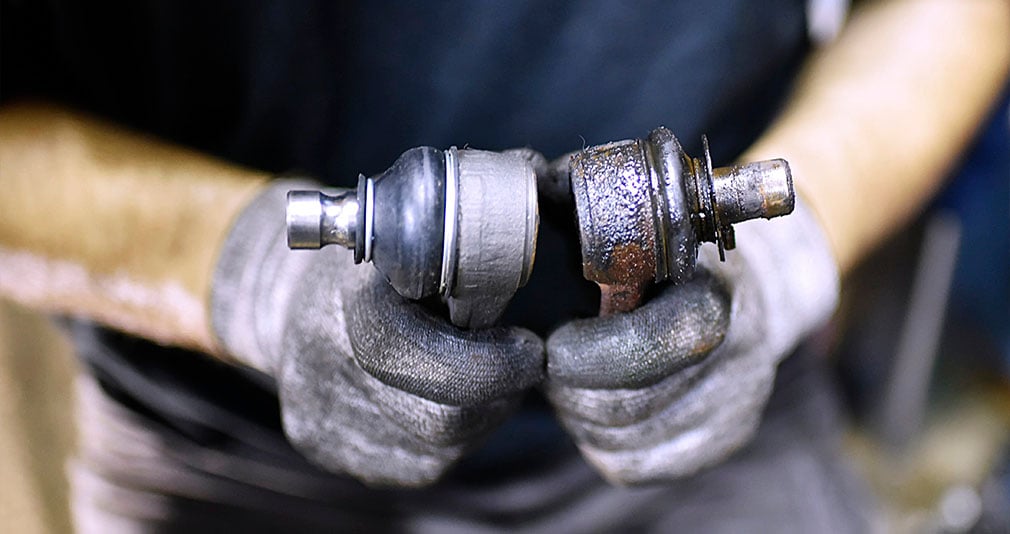You should not drive with a bad ball joint as it can lead to accidents or complete failure. A bad ball joint can compromise the steering and suspension of the vehicle, posing a serious safety risk.
It is important to address this issue immediately to ensure the safe operation of the vehicle. Driving with a bad ball joint can be extremely dangerous and should be avoided at all costs. Not only does it pose a threat to your safety, but it can also cause further damage to your vehicle.
We will discuss the potential risks and consequences of driving with a bad ball joint, as well as the signs to look out for that indicate a problem with this critical component.
Additionally, we will explore the importance of regular maintenance and timely repairs to ensure the safe and efficient operation of your vehicle.
Signs Of A Failing Ball Joint
The ball joints in a vehicle’s suspension system play a crucial role in connecting the steering knuckles to the control arms, allowing for smooth movement and proper steering. When ball joints start to fail, it can lead to various issues affecting the vehicle’s performance and safety. Here are some common signs of failing ball joints:
-
Clunking Noise: A noticeable clunking or knocking noise, especially when driving over bumps or rough terrain, can indicate worn-out ball joints.
-
Vibration in Steering Wheel: Experiencing vibrations in the steering wheel, particularly at higher speeds, may suggest problems with the ball joints.
-
Uneven Tire Wear: Failing ball joints can cause uneven tire wear. Check for excessive or abnormal wear patterns on the tires, which may indicate alignment issues.
-
Wandering Steering: If the vehicle’s steering feels loose or wanders, and you find yourself constantly correcting the direction, it could be a sign of failing ball joints.
-
Visible Damage: Inspect the ball joints visually for any signs of damage or excessive play. Look for grease leakage around the joint, as it may indicate a damaged seal.
-
Steering Responsiveness: A decrease in the responsiveness of the steering system, or difficulty steering, may point to issues with the ball joints.
-
Squeaking or Creaking Sounds: Squeaking or creaking noises when turning the steering wheel could be indicative of deteriorating ball joint components.
-
Visible Movement: Lift the vehicle and attempt to move the wheel in and out at the top and bottom. Excessive movement or play is a clear sign of ball joint wear.
It’s crucial to address failing ball joints promptly, as they can compromise vehicle control and lead to safety hazards. If you suspect issues with your ball joints, it’s advisable to have a qualified mechanic inspect and replace them if necessary.

Credit: blog.rainbowmuffler.net
Impact On Vehicle Safety
Driving with a bad ball joint can pose a serious risk to vehicle safety. The most significant impact is the decreased steering control which can compromise the driver’s ability to maneuver the vehicle safely.
Additionally, a worn-out ball joint can lead to suspension instability, causing the vehicle to handle unpredictably, especially on uneven road surfaces. Furthermore, it poses a risk of collapsed front suspension, which can result in a catastrophic loss of control while driving.
Therefore, it is crucial to address any issues with ball joints promptly to avoid potential safety hazards on the road.
How Long Can You Drive With A Bad Ball Joint
Driving with a bad ball joint can be risky and hazardous. Temporary driving for short distances with a bad ball joint is not recommended as it can lead to further damage and potential safety hazards.
It is crucial to address the issue promptly to avoid compromising your safety and that of others on the road.
Immediate suspension repair is essential to prevent any potential accidents or damage to other vehicle components. Seeking professional inspection and repair recommendations is highly advised to ensure the optimal function and safety of your vehicle.
Ignoring the issue can result in more extensive and costly damage, as well as increased safety risks. Addressing the problem promptly is paramount for your safety and the well-being of your vehicle.
Conclusion
Driving with a bad ball joint can pose serious risks to you and other road users. It’s crucial to address this issue promptly to ensure your safety and prevent further damage to your vehicle.
Don’t delay in getting your car inspected and repaired by a qualified mechanic to avoid potential accidents and costly repairs down the road.
